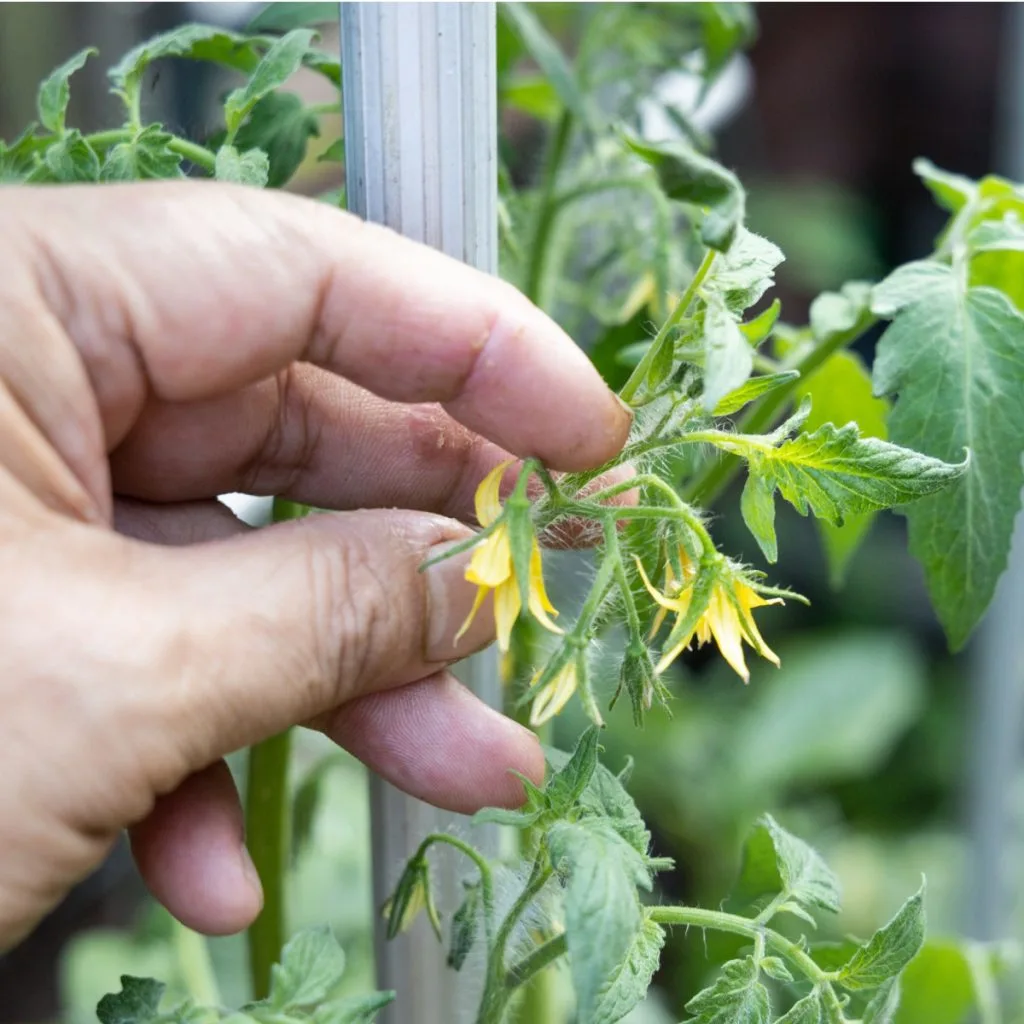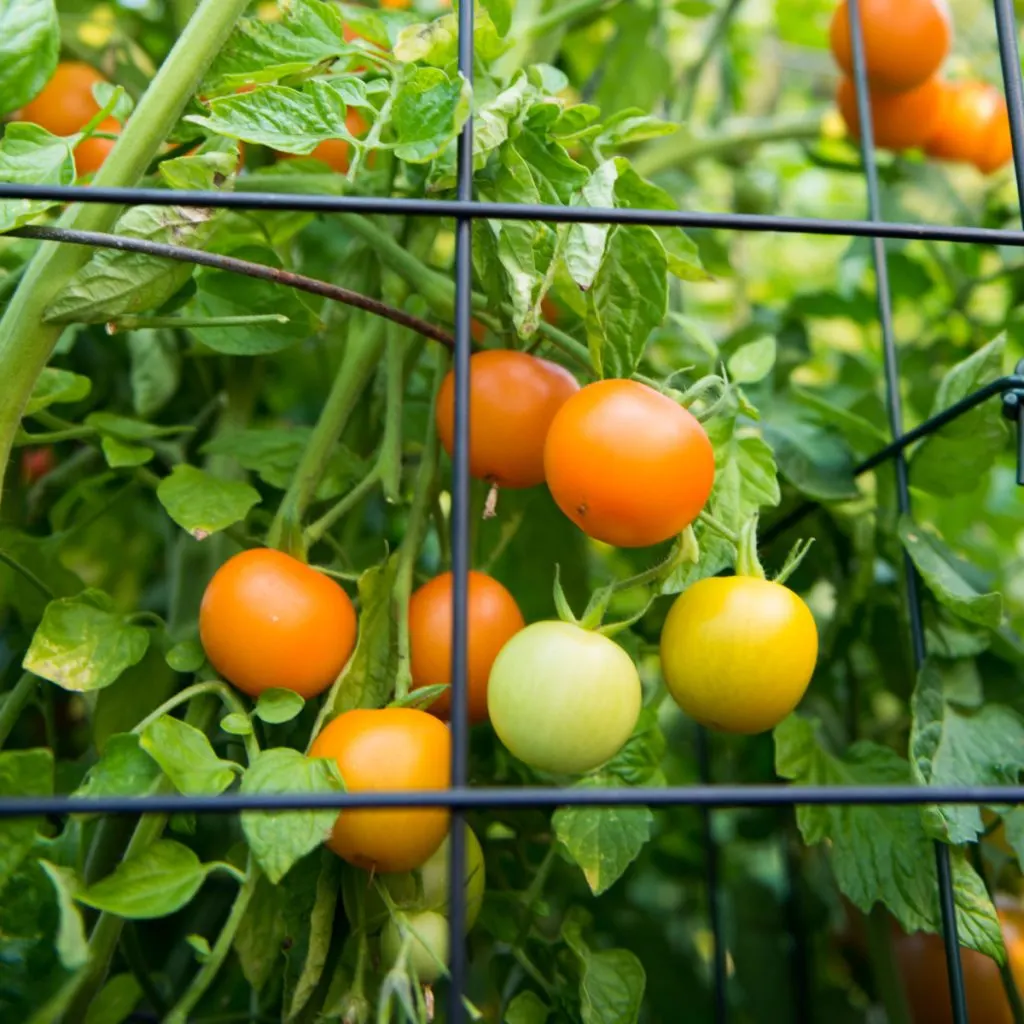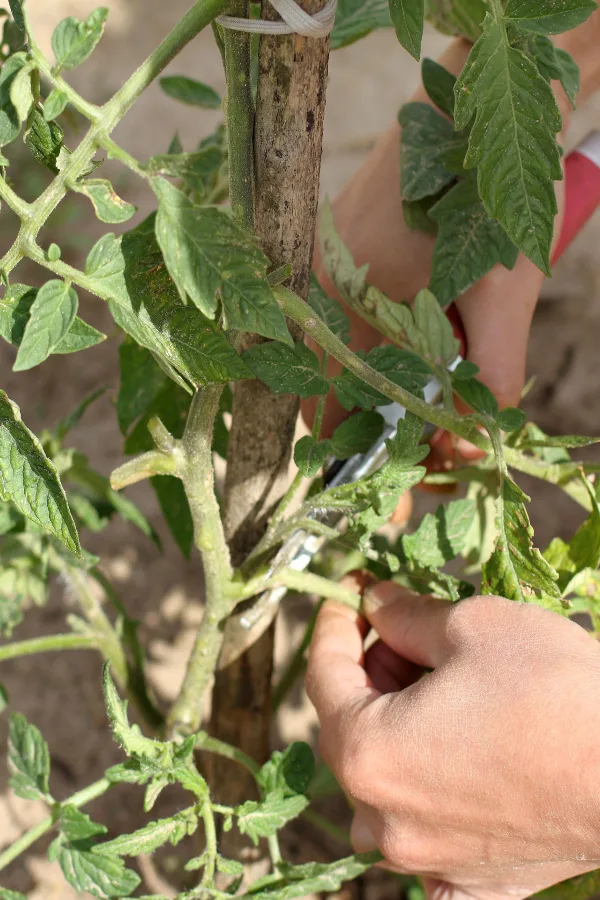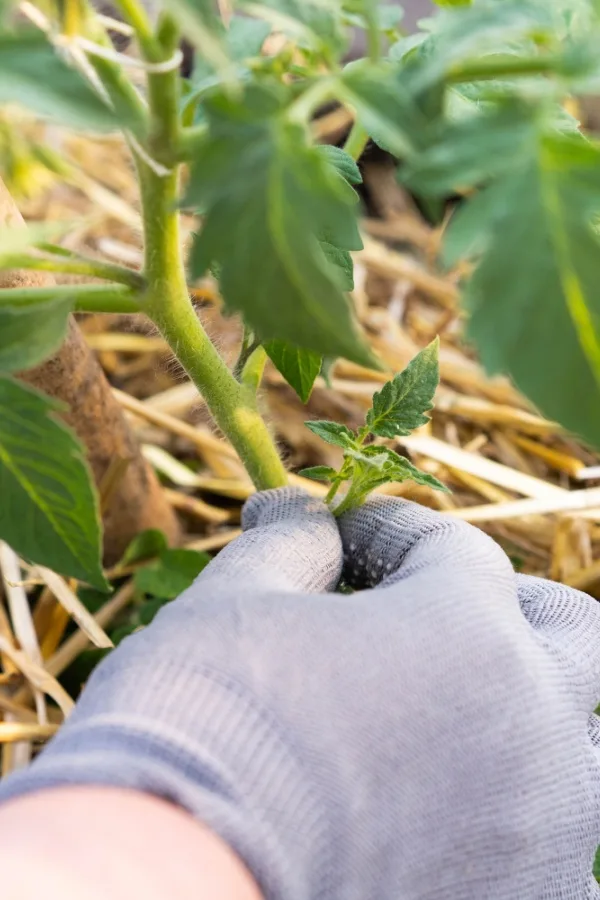Did you know that pruning the first early blossoms and small tomatoes off of your young tomato plants is one of the best ways to ensure a big summer harvest?
It might feel a bit odd to take off the first flowers or even the first small green tomatoes that form on your plants, but as it turns out, early pruning can actually play a big role in building a healthy, productive plant that produces far more tomatoes later in the summer.
Tomato plants grow fast. As soon as they are placed in the ground, they start working to put on new foliage, stems, and roots. Sometimes – even flowers and fruit. But when those first blossoms start forming too early, it can actually be bad for the plant.

Instead of growing large and healthy, the plant starts spending a large portion of its energy on making fruit. Unfortunately, long before the plant has the strength to support it. And even worse, at the expense of growing.
Here is an in-depth look at how early pruning can make a big difference for your tomato plants – along with the best way to properly remove flowers, fruit, and lower branches to help your tomato plants grow better than ever this year!
Pruning Young Tomato Plants
Why Early Pruning Of Tomato Plants Matters So Much
When a tomato plant is young, it has one main job. And that job is to grow strong roots and a healthy base of leaves and stems. All of the plant’s energy needs to go toward this kind of early growth. If a young plant is using its limited resources to grow tomatoes, it won’t be able to build out strong roots or enough leaves.
Without a strong root foundation, the plant will struggle to support a large harvest later on. This is why it’s far better to delay fruit for a few weeks and remove early blossoms. This allows the plant to bulk up. And a bigger, stronger tomato plant can handle a larger crop. It can also continue to produce better through the entire growing season.

Removing The First Fruits
Just like early blossoms, early fruit can also cause a lot of trouble for your tomato plants. The small green tomatoes that sometimes appear just days or weeks after transplanting may seem exciting, but they are actually pulling valuable energy. And what’s worse, these early tomatoes usually take a long time to ripen.
Tomato plants tend to work extra hard to grow their first few fruits. The first tomatoes often take two to three times longer to reach maturity than later fruit. That means the plant is sending its energy into something that’s going to hang on the vine for weeks and weeks.
During that time, the plant won’t be growing as fast, and it won’t be setting new fruit as easily. By pruning off those early tomatoes, you’re freeing the plant to focus on becoming strong.
And yes, this also means you should remove any fruit from a transplant you may have purchased. All too often, gardeners think this will lead to early fruit. It actually will delay the plant’s ability to produce consumable fruit far longer.

How Long To Remove Blossoms and Fruit
So how long should you remove blossoms and any fruit? A good rule of thumb is to remove all production during the first four weeks after transplanting your tomato plant.
The first month is critical for building strength. This is the time frame that the plant should focus only on growing bigger and stronger. Check your plants every few days and snip off any flowers that begin to appear. If you miss one and a tomato starts forming, remove it as soon as you see it.
If you’re growing determinate tomato varieties (those that produce one main crop all at once), stopping early blossoms can be especially important. Determinate plants tend to produce fruit in a shorter window of time, so you want them to be large and well-developed before they set their fruit.
Indeterminate varieties (which keep growing and producing all season) also benefit from early blossom removal, as they’ll have more energy to continue producing flowers later on.
Pruning The Lower Branches Of Tomato Plants
While you’re working on removing blossoms and fruit during the first month, it’s also a great time to prune off the lower branches of the plant.

Lower stems and leaves are more likely to come into contact with soil, which can carry harmful diseases, especially tomato blight. When rain or watering splashes soil up onto these lower leaves, it spreads fungal spores and bacteria that can quickly infect the entire plant.
To help avoid this, remove any branches or leaves that are within the first 8 to 10 inches of the soil. You can do this by snipping off any stems that are touching or close to the ground.
This opens up the lower part of the plant, improves air circulation, and makes it much harder for disease to take hold. This kind of pruning not only helps reduce the risk of disease, it also helps light and air get into the center of the plant.
Good airflow is important for drying out the leaves after rain or watering. Wet leaves are another common cause of disease, so anything you can do to allow air to move through the plant will help keep it healthy.
Don’t Forget To Mulch!
After pruning the lower branches, the next step is to protect the soil beneath your tomato plants. That’s where mulch comes into play. See our article: How To Mulch Tomato Plants – 3 Simple Secrets To Give Your Tomatoes The Perfect Mulch!

A 4 to 6 inch layer of mulch made from straw, shredded leaves, or grass clippings helps in several ways. First, it keeps the soil from splashing up onto your tomato plants during rain or watering. That prevents blight and other soil-borne diseases from reaching the leaves.
Second, mulch keeps moisture levels more consistent. Tomato plants like evenly moist soil -not soggy or bone dry. Mulch helps hold water in the soil and slows down evaporation, especially during hot summer days.
Third, mulch keeps weeds down. Weeds steal water and nutrients from your tomato plants. They also block airflow and can create damp, crowded conditions around your plants. That, of course makes it perfect for disease to spread.
Here is to pruning your young tomato plants and removing fruit and blossoms early on – and to a much bigger and better harvest for your efforts!
Simple Garden Life
Follow Our Facebook Page For Even More Great Tips! Simple Garden Life Facebook Page
Simple Garden Life is a website dedicated to keeping gardening fun, simple and enjoyable! We publish two new articles each week along with a new garden podcast episode every two weeks. This article may contain affiliate links.
